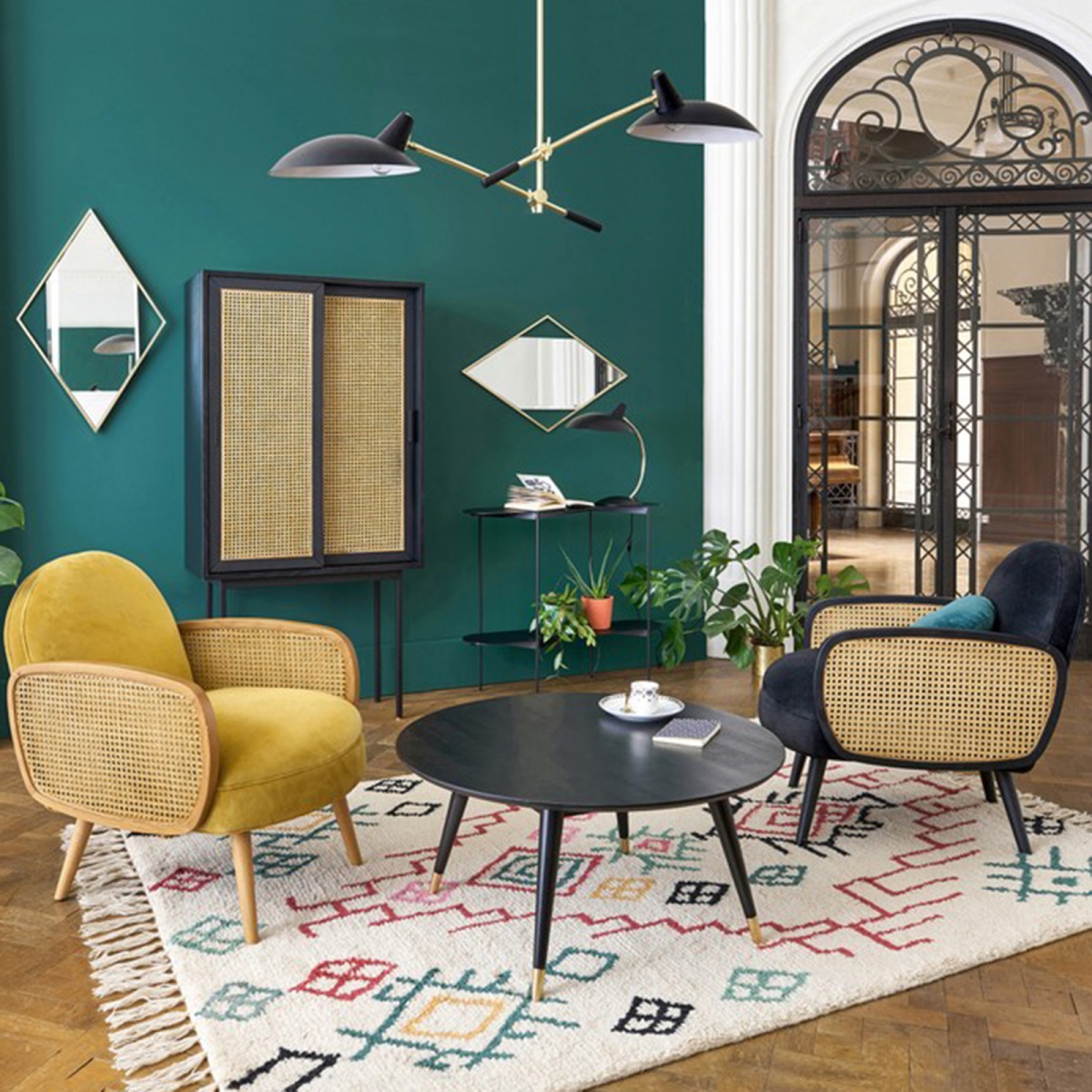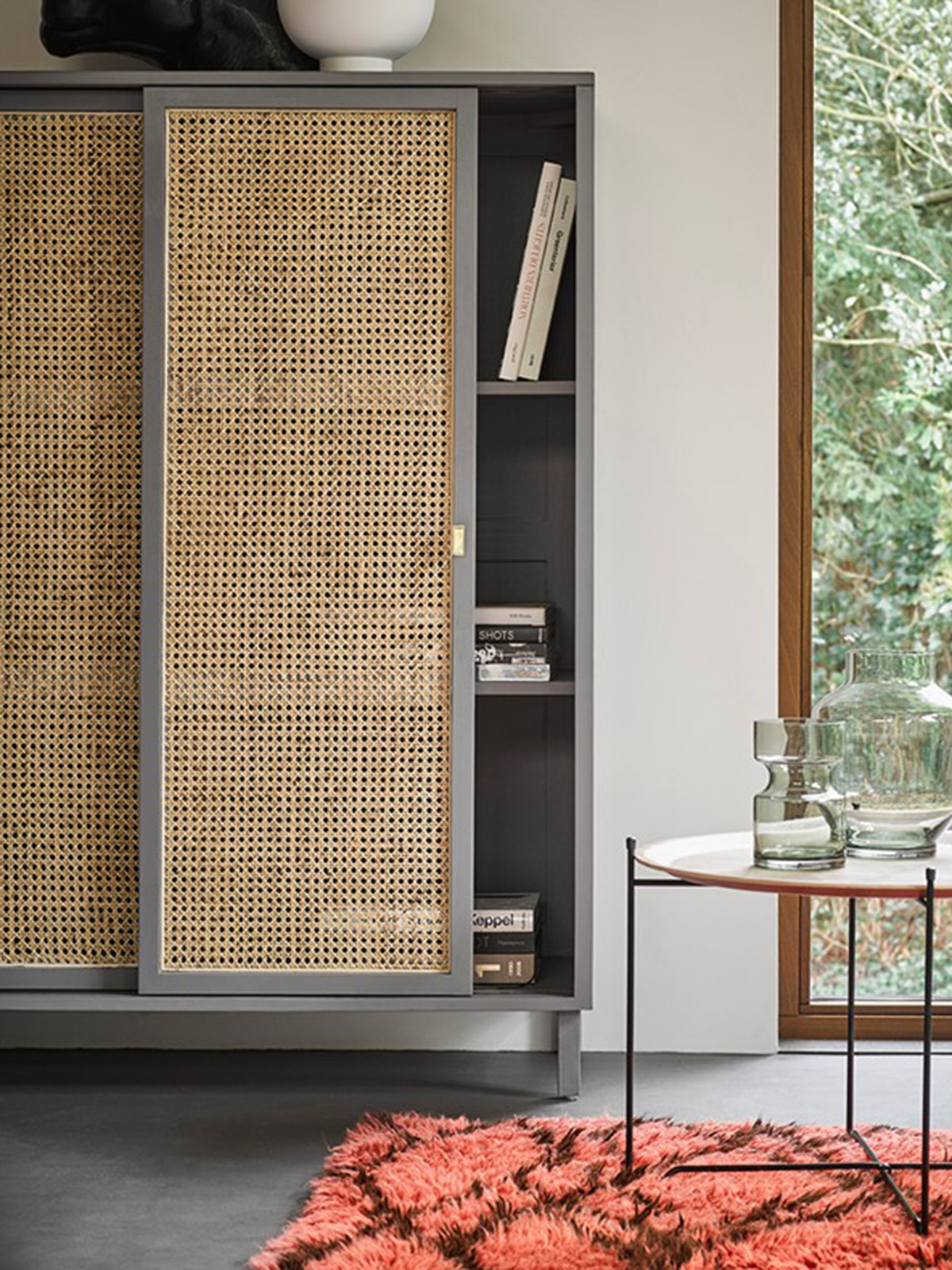Interiors trend report: Cane furniture

Stop press: Cane is no longer just for the conservatories
After my trip to Maison and Objet in Paris last week, where I was scouting out all the trends at this international trade show, one thing surprised me (because a lot didn’t!) was the resurgence of cane furniture, but reinvented in a really modern and interesting way. It was everywhere from living room furniture to beds, cupboard fronts and accessories. As soon as you mention cane, rattan or wicker furniture it instantly conjures up images for me, of those three-piece sets often set in a 70s conservatory. Maybe that’s no bad thing but what I am seeing is a reinterpretation resulting in a more refined and modern look. Although fashions current love affair with everything ’70s and beige, maybe it’s no surprise that the best dressed homes will have an element of this vintage flashback too.

Webbing sliding door cabinet grey, HK Living
So firstly, what even is it!
Cane is the actual material that comes from the rattan (outer) stalk – a climbing vine which comes from the palm family. Wicker is the woven technique used to make products out of natural materials such as rattan core, willow and rush (and more). Mistakenly some people confuse furniture or chair caning with wicker. To clarify, chair caning is specifically the craft of applying rattan cane or rattan peel to a piece of furniture commonly the backs or seats of chairs, whereas wicker or wickerwork is a reference to the craft of weaving any number of materials such as willow or rattan reeds as well as man-made paper based cords. Just so you know!
Throughout the ages
Using these lightweight, natural materials have been popular for thousands of years for their durability and flexibility. They were particularly popular for the use of seating and the backs of chairs in the mid-1660s in England, France and Holland due to the thriving trade with Asia. It then had another boost throughout the Victorian era as it was believed to have been more hygienic than upholstered furniture – which I totally get! I think that’s why it’s perfect conservatory furniture too as it keeps your bum cool.
And who can forget the iconic Peacock chair which rose to fame in the 1970s, which is still being restyled and reworked today whilst still maintaining that classic shape with all the impact.

It’s easy to get the look on the high street. This cane chair and lamp both by French Connection.
How to interpret the trend in your home
So today, it is still as practical, lightweight and aesthetically pleasing for its natural and organic texture and not to mention sustainable qualities. I also think it also celebrates an iconic hand made furniture making craft which is why I’m seeing it embraced by young furniture designers like Sebastian Herkner, who was voted Maison and Objet designer of the year.

Furniture designer Sebastian Herkner uses traditional cane techniques in his furniture designs. And those are bamboo effect ceramic tiles in the back ground!
I love the little vintage twist it gives a space. I think it works really well with mid-century modern style furniture. Furniture brand Ton had a lot of fun producing trad bentwood and cane chairs but lacquering them in the latest ice cream shades like mint green and pale pink which looked cool. It also works really well with the trend for all things palmy and botanical and that trend is going nowhere right now. You can even make it work in a more bohemian setting and come over all Stevie Nicks. However, this isn’t where the design-led are going. They are using it to embellish a more spartan, even Scandi aesthetic in order to add a little craftsmanship and texture which I think really works.

The best news about this trend is it’s so easy to source great product. Where design leads, the high street is quick to follow, but better still if you are a savvy shoper you can pick up great bits of vintage cane furniture on online auction sites, flea markets, house clearance sales and car boot sales. I’m loving where this look can take you but word to the wise; you probably only need to select a couple of hero pieces or your straight back to that 70″s conservatory look complete with spider plants1
CREDITS: Written by Sophie Robinson, researched and compiled by Luisa Ferdenzi-Rouse.
Featured image at the top: Waska Oak and Cane Sliding Door Cabinet, La Redoute.










 proof that your landing de
proof that your landing de




